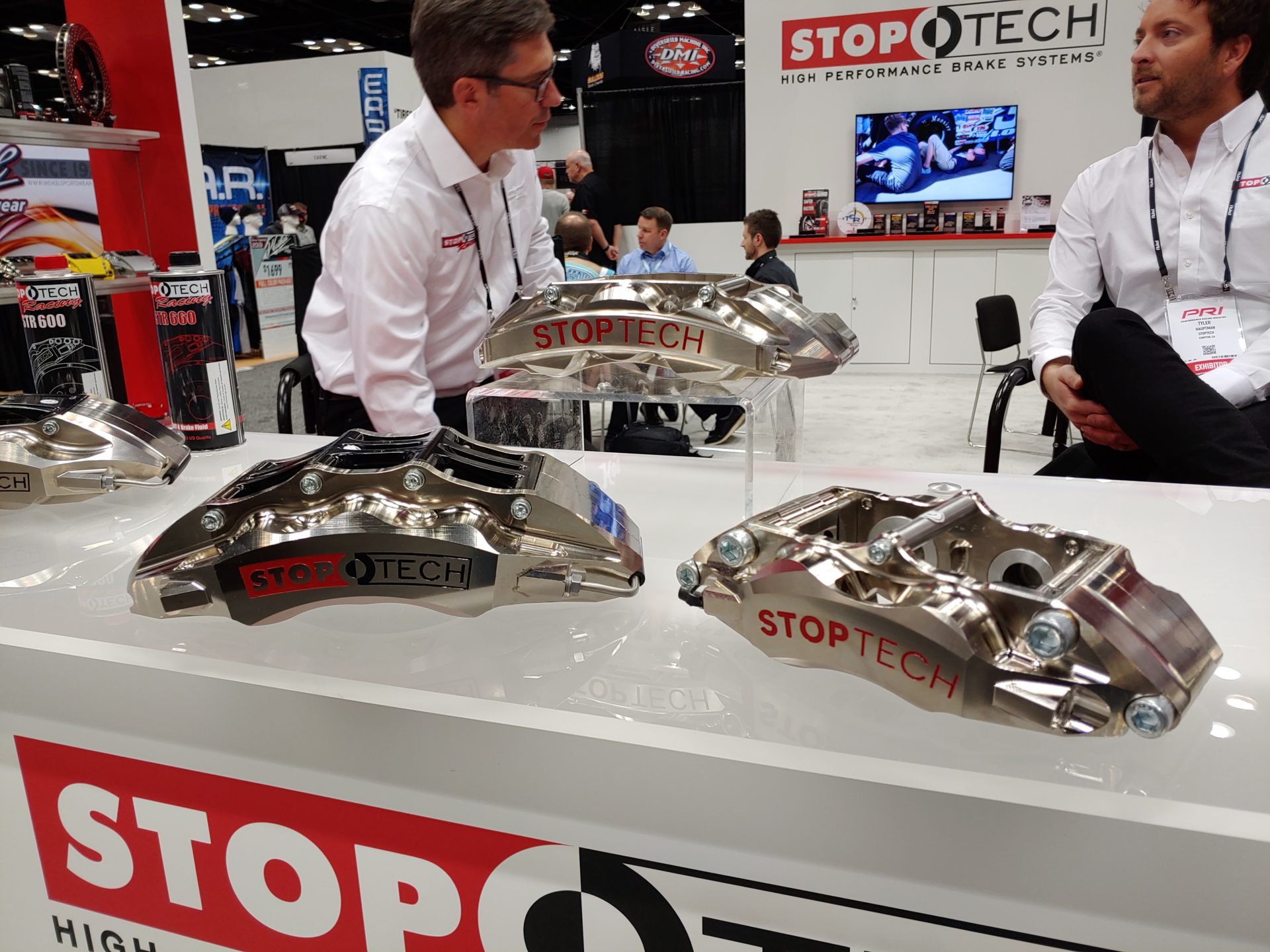
The “Street Fighter Twin” manages to maintain street civility and friendliness while being able to hang on to a whopping 2,000 HP. It incorporates a 10.5″ pressure plate that is designed to work with factory hydraulics and a pair of semi-metallic discs. These semi-metallic discs are one of the key features enabling smooth engagement despite the clutch assembly having such a high horsepower handling capabilities.
The SFT 2000 includes the discs, clutch cover, and a performance flywheel in this rebuildable package, and, along with the RST, RXT, and RXT 1200 rounds out a very impressive lineup of clutches for just about any horsepower need. The SFT 2000 is available for Mustang, early GM, and other LS applications.

King is starting its journey into motorcycle racing, with a new line of XP-based bearings for bikes. At the opposite extreme, King now offers a top fuel-targeted bearing (called TFC) that features a more sacrificial and thicker coating and a harder backing. It’s also packaged specially for race teams, with 4 sets of bearings in a pack.
King is also in the process of releasing a new coated bearing, GPC. Interestingly, because the back of this new coating develops a golden hue after use, they named it GPC with the “G” standing for “golden”. This new polymer coating is on top of a silver overlay.
Where King’s XP bearing is rated at 10,200 PSI, and the SV is rated to 17,400 PSI, ths new GPC coating can withstand 19,800 PSI for those truly extreme duty applications.

With the same cold side as Gen 2, the G57 features a lightweight billet center section. It aalso features an all-new 118mm inconel turbine wheel. The new design and aerodynamic features of the turbine wheel provide a 19% increase in flow.
While these units have been burst tested and while stainless steel SFI and non-SFI turbine housings will be available, there are no plans for a cross-bolt housing at this time. With a targeted displacement range from 3.0 – 12.0L and a target horsepower range of 1400-3000 horsepower, those of you looking to build monstrous turbo applications will have something to look forward to.

This incarnation of the X-PAD is targeted at off road racers. In contrast to the X-PAD to the left, the new X-PAD features thin and high-density foam that is attached to the seat shell with an industrial adhesive. The dirt and grime and other harsh environmental factors of off road racing make it nearly impossible to keep traditional cloth and foam seat materials clean. The normal materials tend to quickly degrade, or, worse, start to smell bad.
The foam and adhesive used in the new X-PAD are waterproof, which allows the seat to simply be hosed out for cleaning. Wherever the driver or co-driver want more padding, additional inexpensive foam can be used and simply thrown away.
This specific seat is the only example in the world right now, and it has flown to every major motor racing show on the planet. This meant there were a lot of butts getting in and out of it, and Sabelt’s engineers are already examining the wear patterns and looking to make improvements. Since the seat is in active production right now, those improvements will likely land on shelves with the seats in early 2020.




8 comments
I’d like to see a study on the differences between split calipers like the stoptechs and forged monoblock calipers like AP/Alcons. Other than saving a few grams what do you get for a 50% price hike?
I’ve thought about putting a Fueltech ECU dash on my miata on and off since I heard about them. The support is what’s holding me back, there is a huge community of Megasquirt miata owners that can offer support. But the FT450 looks like a badass deal to me, ECU + dash + datalogger, it even has an internal MAP sensor.
I mean, it really wouldn’t be that hard of a test to do, just expensive as it’s not like they give the suckers away. You’re also going to have to try to be apples to apples, as I have a strong suspicion that some parts of AP, Alcon, PFC etc’s lineup have picked different values on the compromise scale of stiffness vs weight or are designed with different constraints. A lot of the high buck monoblock calipers are built to specific classes/configurations. Like, just as a for example, I think the STR60GT is (I think) a similar pad shape/volume to the Alcon TA6 caliper, but will it fit as big of a rotor into a 16″ race wheel? Probably not, because Stoptech probably wasn’t designing for a specific class.
The max rotor size is a good argument I hadn’t though of. You can probably get the same stiffness and rotor/pad size for half the price by going with a split caliper but if you want the biggest rotor you can fit in a wheel then monoblock would be the only option.
Which is not anything against Stoptech IMO, it’s just a “stuff designed to the limits of rules for specific applications will do better at that then a generalist design” thing.
@Nicolas Girard
Most modern racing ECUs have internal MAP as well as some level of logging. It’s really the integrated dash that is the bonus, as that’s generally a $600+ option from just about any other vendor.
For a non-forced-induction BP6 (I’m assuming NA/NB motor that doesn’t even have VVT) you really are fine with anything. If your motor is already running on the Megasquirt, you could go with one of the logging dashes like the AEM CD7-L. It’s pricey, but would round out everything you need, and in the future you could use any other ECU with that setup.
If you don’t have anything yet, the FT450 could be a great option, and the support should be pretty good. FuelTech is based right around the corner from me in Georgia and they’re super friendly. Most of your “issues” would be around wiring (no plug-and-play FT450-BP6 harness) and a base map (FuelTech probably doesn’t do many NA 4-cyls). But motors will run even with pretty bad maps and you just need to get it going well enough to get on the dyno =)
Thanks for the info, I’ve never installed an ECU myself, I’m looking at swaping my 200k miles BP6 to a later model engine BP4W or BPZ3 and the Megasquirt looks like the easiest option.
NA/NB miatas have chunky MAF sensors instead of MAP, I thought the megasquirt didn’t have an internal MAP (it does) because I’ve read about putting in a GM IAT/MAP sensor when you delete the MAF.
TIL: Turns out you do it because the MAF module you delete also has the intake air temp sensor inside, the GM part has the IAT and gives you a second MAP for barometric data.
For a first time, the plug in ECU with the wide user base is probably the more intelligent choice. The FT450 is still a great deal, it’s a bit cheaper than the MSpnpPRO, has a dash and real slick program.
The AEM dash is a cool piece but it is half the price of the Miata on its own. it would look off brand next to the knockoff Bride seats and cheapo NRG steering.
All good points. That MS3 Pro with a plug-and-play harness is going to work great. Good luck!
In theory the advantage of 1 piece calipers is less flex.
In practice I think would be hard to tell.